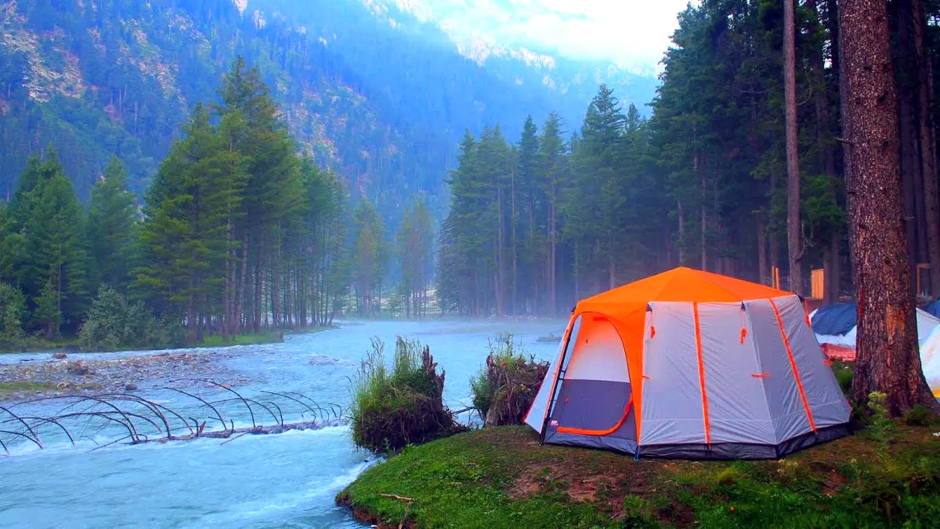If you’re looking to visit the best places in Kumrat Valley to escape from your bust routine and reconnect with nature, then this place is best for you. Kumrat Valley is gradually become one of the most famous tourist attractions of Pakistan. It offers peace and adventure both.
Kumrat Valley offers many viewpoints and adventure opportunities. This list contains all the finest places as a guide to Kumrat Valley that have to be on your hit list when visiting the place and more.
Table of Contents
Overview of Kumrat Valley
| Aspect | Details |
|---|---|
| Location | Upper Dir District, Khyber Pakhtunkhwa Province |
| Main Attractions | Panjkora River, Jahaz Banda Waterfalls, Katora Lake, Do Kala Chasma, Kund Banda |
| Best Time to Visit | May to September (Spring/Summer) |
| Temperature Range | -4°C (Winter) to 25°C (Summer) |
| Travel Routes | – Islamabad to Kumrat: 6-7 hours (via M2 & M1 Motorways, passing through Malakand Pass) – Lahore to Kumrat: 10-12 hours (via M2 Motorway) – Swat to Kumrat: 80 km, via Badgoi Pass (adventurous) |
| Accommodations | – Valhalla Resort: Rs 10,000-17,000/night – Kumrat Glamping Resorts: Rs 10,000-14,000/night – Khanabadosh Glamps: Rs 12,000/night – Infinity Villa and Resort: Rs 14,000/night |
| Road Conditions | Rough terrain, recommended 4×4 vehicle |
| Environmental Awareness | Responsible tourism, minimal waste, respect local ecosystem |
| Connectivity | Weak mobile signals (especially non-Jazz networks), no Wi-Fi in most areas |
| Packing Tips | Warm clothes, rain gear, cash (no ATMs), snacks, first-aid kit |
| Local Customs | Dress modestly, respect local traditions |
How to Reach Kumrat Valley?
Kumrat Valley is located in Upper Dir, Khyber Pakhtunkhwa. The journey to this remote paradise is as exciting as the destination itself, offering travelers diverse scenic experiences from various starting points.
Islamabad to Kumrat Valley
The drive from Islamabad to Thal, the gateway to Kumrat, takes about 6-7 hours. The route follows the M2 Motorway, transitioning to the M1 and passing through Mardan, Malakand Pass, and Upper Dir. From Thal, a 4×4 vehicle is essential for the final 45 km stretch, a 2-hour off-road journey through forested paths. For Google Map click here.
Lahore to Kumrat Valley
The journey from the city of gardens to Kumrat covers around 690 km and takes 10-12 hours. You can drive via the capital city or opt for a flight to Islamabad, cutting down travel time before continuing by road. For Google Map click here.
Swat to Kumrat Valley
For adventurers, a rugged 80 km drive from Kalam through the Badgoi Pass offers breathtaking views, though it requires skill to navigate the steep and rocky terrain. For Google Map click here.
Flight to Chitral
Some opt for a flight to Chitral from Islamabad, followed by a road trip to Thal, combining aerial views of the northern landscape with a scenic drive to Kumrat.
Best Time to Visit Kumrat Valley
Of all the times, the perfect duration to visit this destination is in summers, between May to September. The weather is great in this duration and the beauty of the place is also on its peak.
| Season | Temperature Range | Weather Conditions | Best Activities |
|---|---|---|---|
| Spring/Summer | 15°C – 25°C | Mild, green landscapes | Trekking, sightseeing, rafting |
| Fall | 5°C – 15°C | Cooler, vibrant foliage | Photography, peaceful walks |
| Winter | -4°C – -16°C | Harsh, snow-covered terrain | Limited access, snow viewing |
Best Places To Visit in Kumrat Valley
Once you’ve reached there and stretched out a little, you have to start your trip with the following places:
1. Panjkora River: Nature’s Tranquil Flow
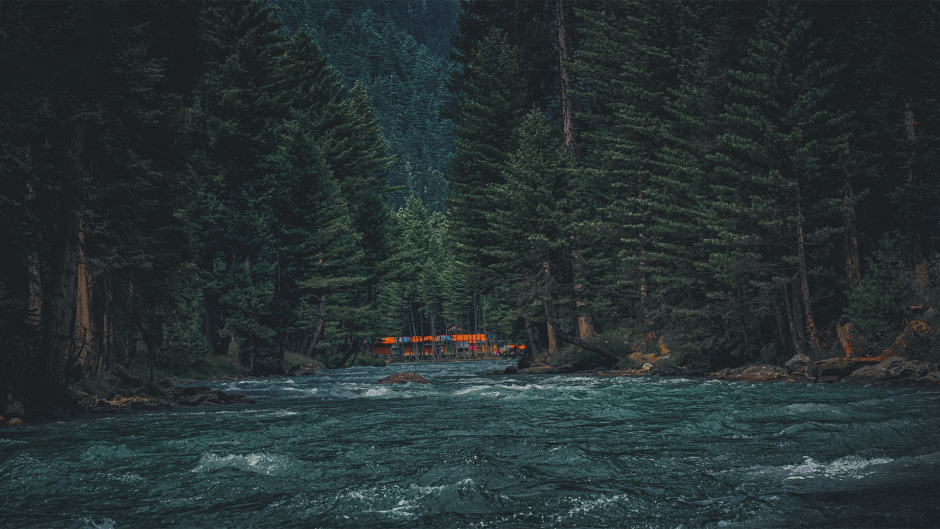
Wake up to the gentle murmur of the Panjkora River, a crystal-clear stream that runs through Kumrat Valley. This river is not only a visual delight but also an excellent spot for both relaxation and adventure. Whether you’re keen on fishing for the famed trout or eager to test your skills with some rafting, the Panjkora River offers a perfect setting for a variety of activities.
Originating from the Hindu Kush Mountains, the river travels over 220 kilometers through Dir and Timergara before joining the Swat River at Chakdara. Its clear waters, surrounded by lush green foliage, make it a standout feature of Kumrat Valley.
2. Jahaz Banda Waterfalls: A Natural Wonder
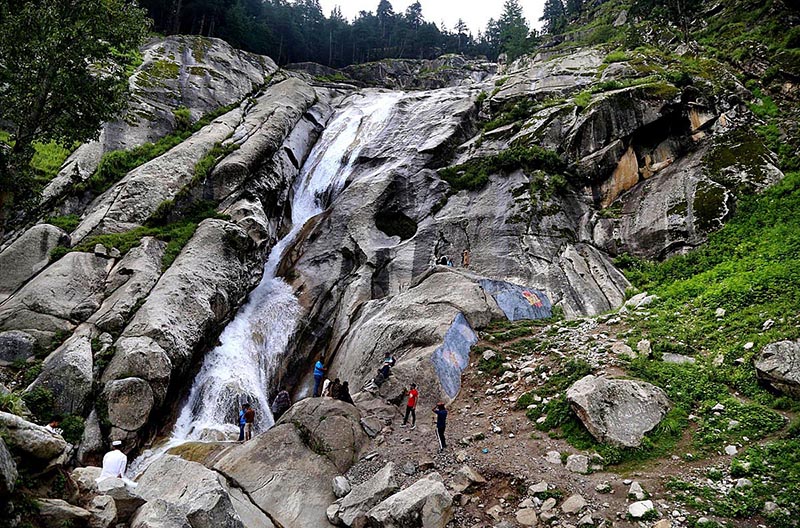
For those who appreciate the beauty of waterfalls, the Jahaz Banda Waterfalls are a highlight you shouldn’t miss. The cascading water creates a stunning spectacle, and the hike to the falls is just as rewarding. Once you reach the top, the cool mist from the falls offers a refreshing experience. Positioned at 3,100 meters above sea level, this waterfall is one of Kumrat Valley’s most remarkable sites, set against a backdrop of snow-capped peaks and towering trees.
Directions to Jahaz Banda Waterfalls:
Begin your journey by heading north through Upper Dir to Darwaza village. From there, follow the road to Lamoti village. Continue ascending towards Jandrai village via an unpaved but jeep-accessible route. Once in Jandrai, the path leads to the scenic Jahaz Banda Meadows, where the trail to the waterfalls begins.
3. Katora Lake: A Hidden Gem of Kumrat Valley
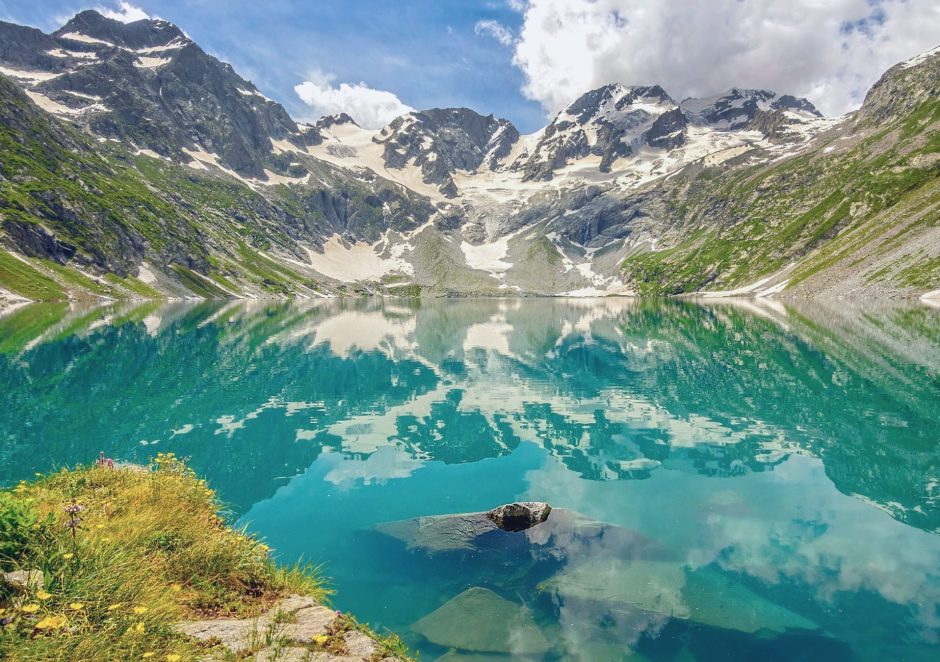
Katora Lake stands out as one of the most stunning destinations in Kumrat Valley. Though reaching it requires a hike, the effort is rewarded with breathtaking views. The lake’s crystal-clear waters, resembling polished glass, reflect the majestic mountains that surround it, creating a serene and captivating scene. The name “Katora,” meaning “bowl” in local languages, aptly describes its bowl-like shape, and the lake is fed by melting glaciers that add to its charm.
Getting There:
To reach Katora Lake, start from Kumrat Valley and head through Jahaz Banda. From Thal, 4×4 vehicles can take you to Taki Top, where the trek to Jahaz Banda begins. A round trip, including 1-2 nights at Jahaz Banda, costs between Rs. 10,000 to Rs. 12,000, with options for tent or wooden room accommodations. Hiring a guide or porter is recommended, or you can rent a horse for approximately Rs. 2,000 to get closer to the lake. The hike from Jahaz Banda to Katora Lake, taking about 4 to 6 hours, is steep and challenging, but the lake’s beauty makes it a rewarding experience. Proper planning allows you to enjoy two of Kumrat Valley’s top attractions in one trip.
4. Do Kala Chasma: Tranquil Union of Streams
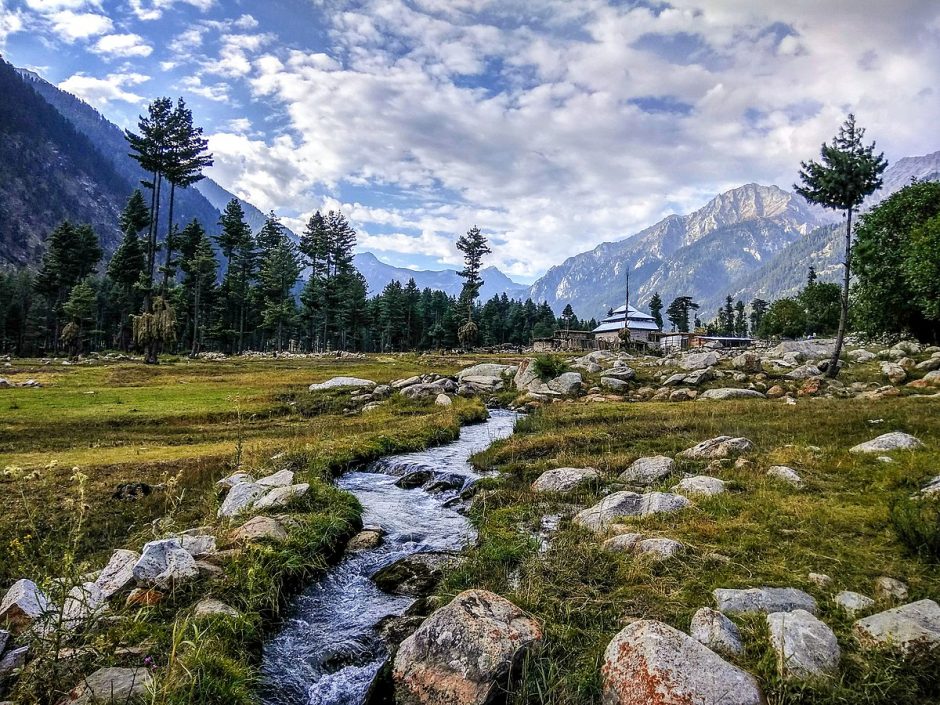
Do Kala Chasma is a serene spot where two streams converge, creating a peaceful retreat in the valley. Ideal for a relaxing visit, this location offers a chance to absorb the natural beauty of the area. The site features various hiking trails suited to different skill levels, providing panoramic views of the surrounding landscapes. Whether you’re trekking, camping, or simply soaking in the environment, Do Kala Chasma promises a memorable experience that lingers long after your visit.
5. Kund Banda: A Serene Escape in Dir Upper
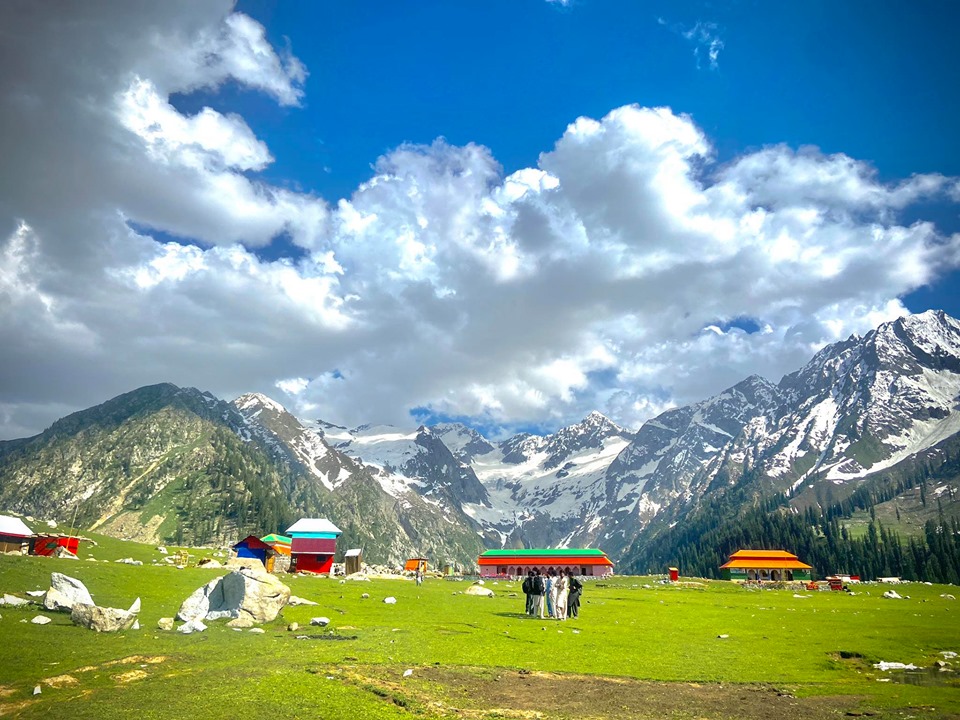
Kund Banda, located near Jahaz Banda in Dir Upper, Khyber Pakhtunkhwa, is renowned for its untouched natural beauty. Enclosed by mountains and flowing rivers, it provides a peaceful haven for nature enthusiasts. The journey to Kund Banda is a scenic drive offering stunning valleys and peak views.
The optimal time to visit is from April to September when the weather is pleasant and the valley blooms with vibrant flowers. Visitors can explore the pristine Kund Banda Lake, enjoy nature walks, and hike through diverse trails. Camping by the lake offers a tranquil experience under the stars. Engaging with local communities allows for a taste of traditional cuisine and customs. With accommodations ranging from guesthouses to camping sites, and warm local hospitality, Kund Banda is a hidden gem combining natural splendor, adventure, and cultural immersion.
6. Wooden Canals of Thal: A Unique Local Craft
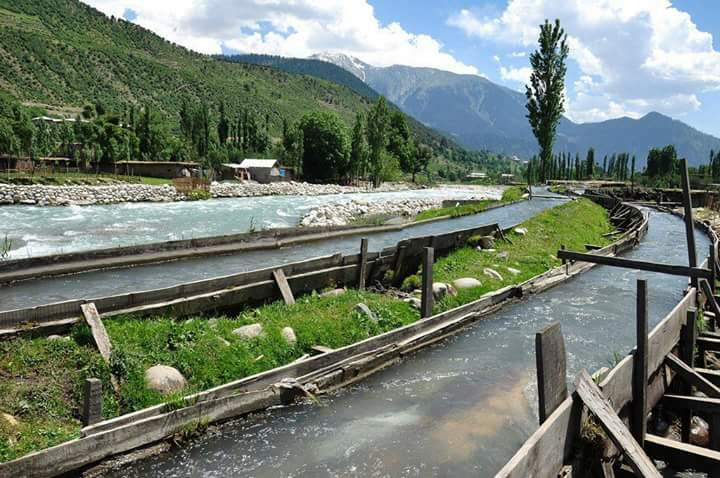
In Thal, you’ll encounter an intriguing feature: wooden canals. These handcrafted structures are more than just scenic—they play a vital role in channeling water from local streams to agricultural fields. Witnessing these traditional canals in action offers a glimpse into local ingenuity and sets the stage for your exploration of Kumrat Valley.
7. Jandrai Trek: A Journey Through Stunning Landscapes
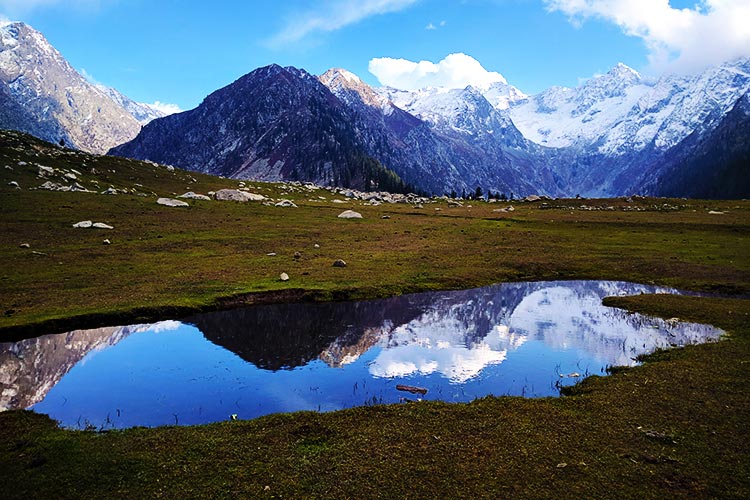
For adventure seekers, the Jandrai Trek offers a rewarding challenge. This trek guides you through some of Kumrat Valley’s most stunning scenery, including lush forests, expansive meadows, and sparkling rivers. The journey concludes in the picturesque village of Jandrai, renowned for its traditional wooden architecture. The trek is both demanding and gratifying, perfect for those eager to experience the valley’s natural beauty.
8. Dojanga: The Serene Crossroads of Kumrat Valley
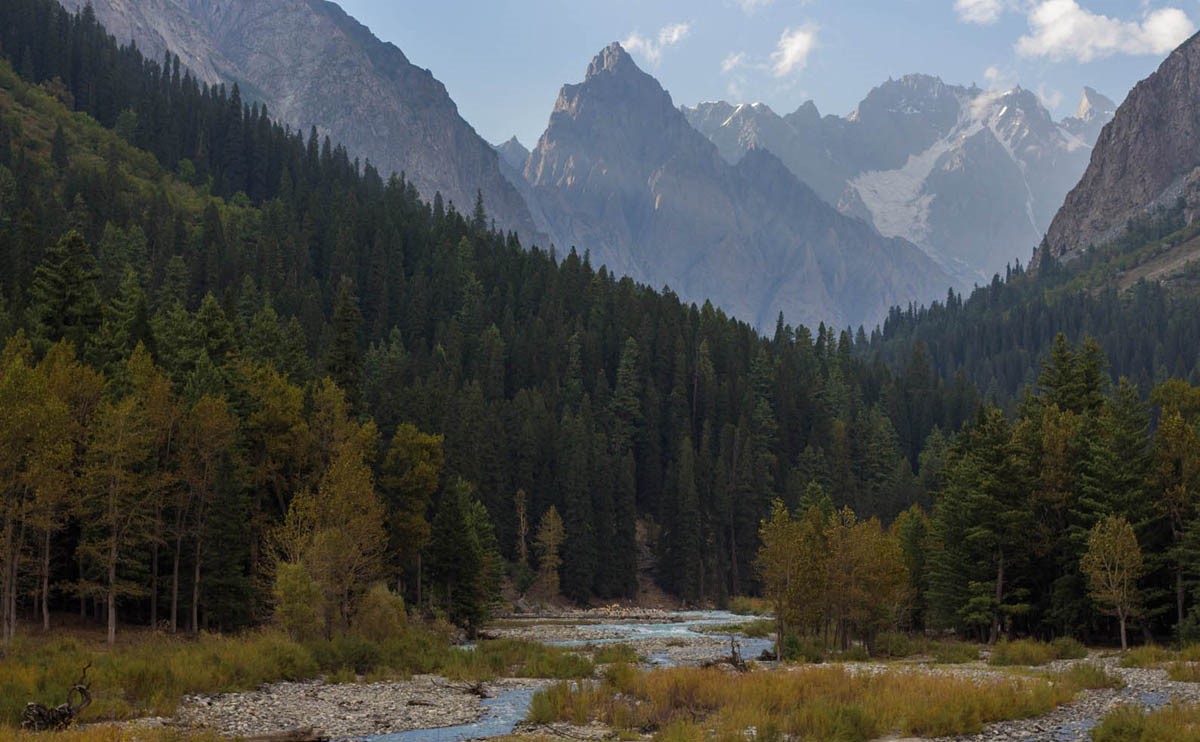
Dojanga, located to the northeast of Kumrat Valley, is a tranquil spot where a wooden bridge spans a river, connecting both sides for locals and visitors alike. The name “Dojanga” means “two paths” in the local dialect, and it aptly describes the area, offering routes to both Shahzore Lake and Kundal Lake. This peaceful area, surrounded by lush greenery, is ideal for camping and bonfires. It provides a perfect escape for those seeking solitude and a deeper connection with nature.
9. Badogai Pass: The High Altitude Gateway
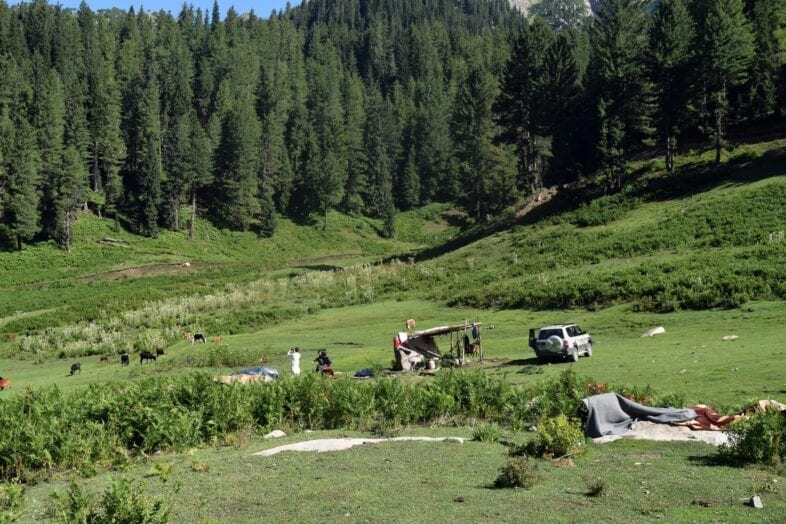
Badogai Pass, also known as Badawi Pass or Do Teer Pass, is a high mountain pass connecting Upper Dir District with Utror and Kalam in Khyber Pakhtunkhwa. At an elevation of 3,523 meters, it serves as a natural boundary between Kumrat Valley and Kalam Valley. The pass is accessible via an unpaved road known locally as the Utrar-Dir Road, stretching 26.53 miles from Kalkot to Utror. Due to heavy snowfall, the pass is closed from November to June. For those who are up for it, the pass offers expansive views of the surrounding valleys and mountains and connects Kumrat with the Chitral district, making it an exciting destination for further exploration.
10. Jamia Masjid Thal: A Tranquil Architectural Gem
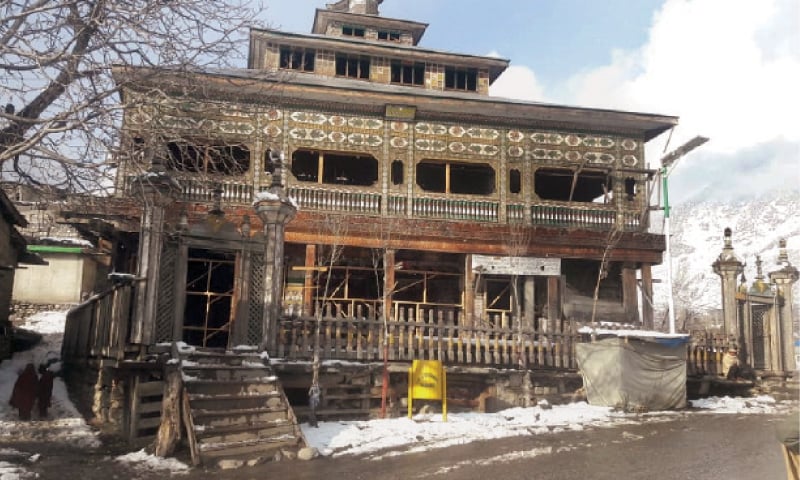
Jamia Masjid Thal is a serene and tranquil spot that showcases remarkable architecture near the entrance to Kumrat Valley in the town of Thal. It has been constructed from stone and wood, the mosque is situated along the banks of the Panjkora River. Its wooden pillars and ceilings are adorned with intricate local artwork. The two-story design provides a stunning vantage point from the second floor, offering beautiful views of the valley and river.
11. Kumrat Forest: A Natural Haven
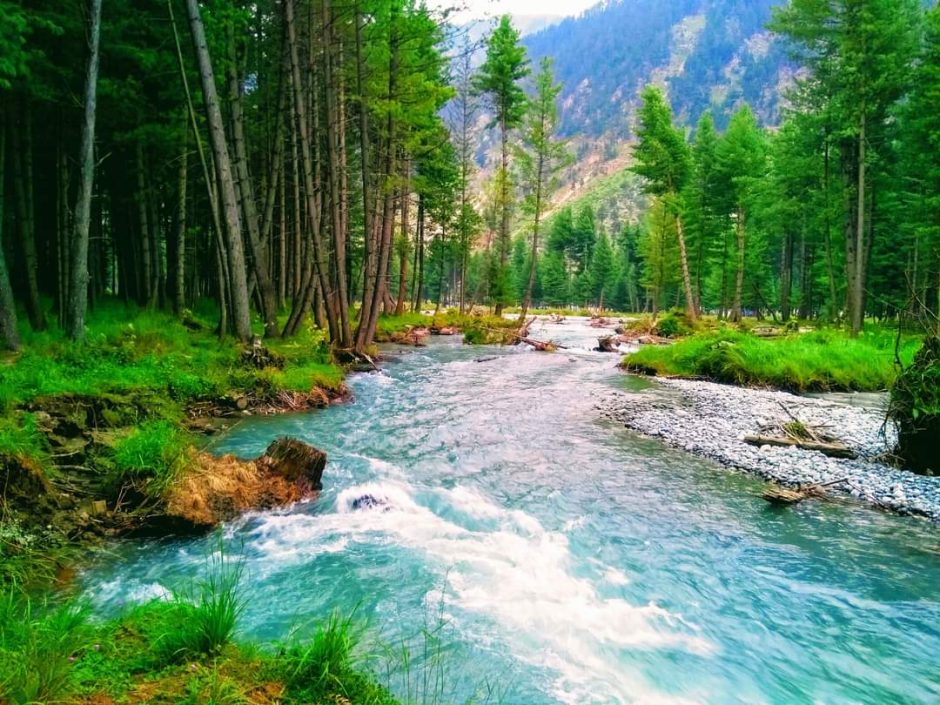
Kumrat Forest is a peaceful retreat, offering visitors a chance to reconnect with nature. The forest is filled with towering pine trees, particularly the majestic Deodar, creating a tranquil environment perfect for unwinding. Walking through the forest, you’ll feel a sense of serenity as the sound of rustling leaves and the crisp, cool air transport you into a world of natural beauty.
However, this paradise is facing challenges. The Deodar forest in Dir Kohistan is rapidly depleting, as local communities rely on it for fuel during the harsh winters. Despite the locals’ willingness to stop cutting these trees if provided with a natural gas supply, their requests have gone unanswered since the 2010s. While the forest remains a breathtaking sanctuary, the need for sustainable solutions is becoming ever more urgent. The preservation of this precious ecosystem is essential to maintaining the unique charm and peacefulness that the Forest offers.
12. Camping Pods in Kumrat: A Unique Experience
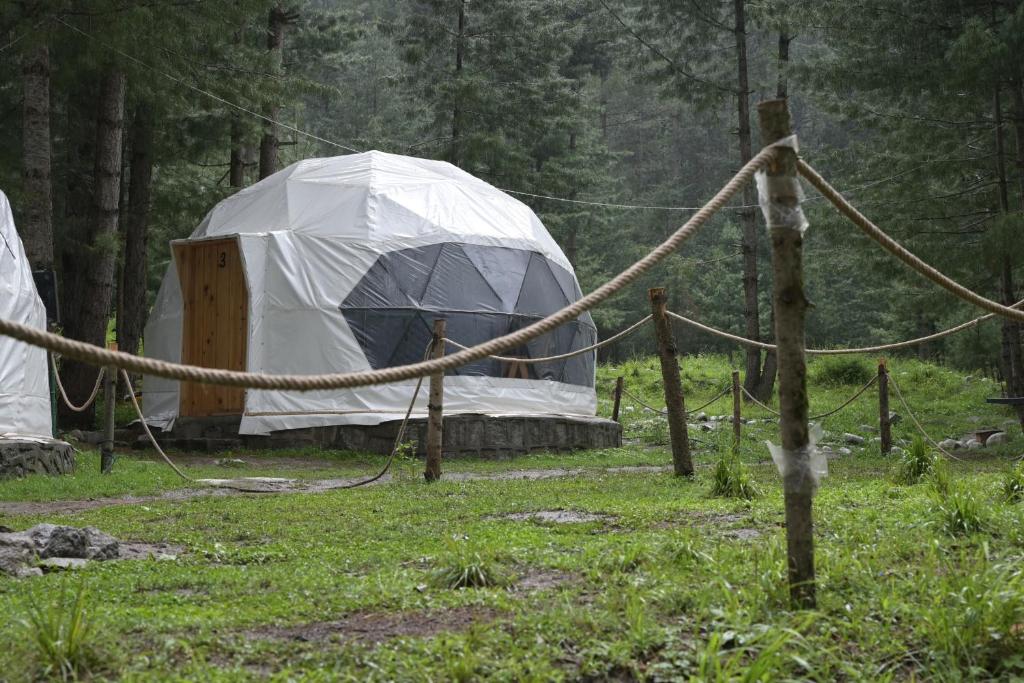
Camping pods in Kumrat offer a one-of-a-kind experience for nature enthusiasts looking to immerse themselves in the destination’s beauty while enjoying a blend of comfort and adventure. Scattered across various resorts in the area, these pods provide a modern twist on traditional camping. With their cozy interiors, wooden finishes, and panoramic views, they offer a snug yet immersive way to spend nights surrounded by nature.
Staying in these pods allows you to enjoy the serene atmosphere of Kumrat, with the sounds of the flowing river and rustling trees just outside your door. Whether you’re stargazing or waking up to the misty morning air, camping pods in Kumrat enhance the experience of being in this peaceful valley, offering an unforgettable stay that balances both relaxation and adventure.
13. Kumrat’s Mountains: A Journey Through Nature
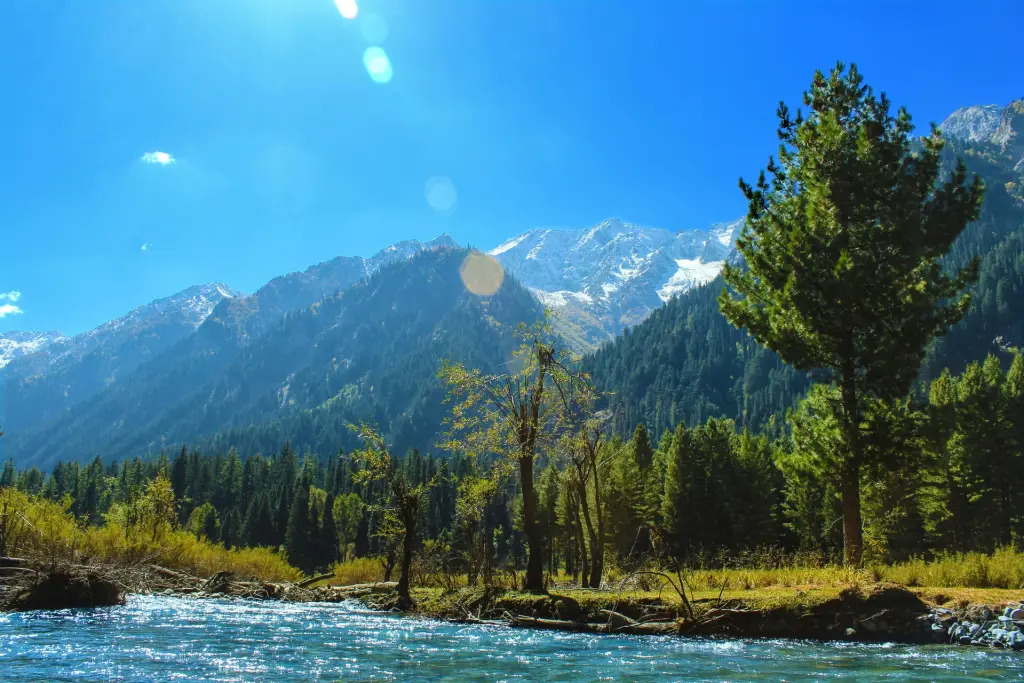
The mountains of Kumrat provide a beautiful sight as you travel toward the destination. Their peaks, often covered in snow, rise high into the sky, while the green slopes stretch down into the valley. The views along the way are calming, with mountain ridges appearing one after another.
These mountains not only surround the valley but also create a peaceful connection with nature. Whether you’re hiking or just taking in the scenery, the mountains make the journey to Kumrat feel special.
Frequently Asked Questions (FAQs)
What is the best time to visit Kumrat Valley?
The best time to visit Kumrat is from June to October. During these months, the weather is pleasant, and the natural beauty of the valley is at its peak, making it ideal for outdoor activities and sightseeing.
How can I get to Kumrat Valley?
To get to Kumrat, you can travel from major cities like Islamabad or Lahore. The journey involves a scenic drive, with the route to Kumrat requiring a 4×4 vehicle due to the rugged terrain. You can also travel from Swat Valley or Kalam Valley.
What are the main attractions in Kumrat Valley?
Kumrat offers a variety of attractions, including the serene Panjkora River, the picturesque Jahaz Banda Waterfalls, and the stunning Katora Lake. Other notable places in Kumrat include Do Kala Chasma and Kund Banda.
What is the distance between Islamabad and Kumrat Valley?
The distance between Islamabad and Kumrat is approximately 370 kilometers. The journey usually takes around 6-7 hours by road, including the final stretch from Thal to Kumrat.
Can I find accommodations in Kumrat?
Yes, Kumrat offers various accommodation options, including resorts, glamping sites, and hotels. For a more immersive experience, consider staying in a tent or a guesthouse in the valley.
What is the temperature like in Kumrat?
The temperature in Kumrat varies depending on the time of year. Summers are generally pleasant, while winters can be quite cold. The weather can significantly impact your experience, so it’s important to check the current conditions before your trip.
Are there any specific routes to reach Kumrat?
Yes, there are several routes to reach Kumrat. You can drive from Islamabad or Lahore, or take a flight to Chitral and then travel by road. The route from Swat Valley via Badogai Pass is another adventurous option.
What makes Kumrat a beautiful place to visit?
Kumrat Valley is renowned for its natural beauty, including dense forests, crystal-clear rivers, and picturesque lakes. The valley is also home to several scenic spots like the Kumrat Waterfall and the tranquil Do Kala Chasma.
What is unique about the culture of Kumrat Valley?
The culture of Kumrat Valley is deeply rooted in local traditions and customs. The valley is known for its hospitality and traditional Kohistani culture, which includes unique cuisine, dress, and lifestyle.
How can I explore the natural beauty of Kumrat Valley?
Exploring the natural beauty of Kumrat Valley involves hiking, trekking, and camping. Popular spots like the Jandrai Trek and Katora Lake provide opportunities to experience the valley’s stunning landscapes up close.
What should I know about the weather and temperature in Kumrat Valley?
Kumrat Valley experiences a range of temperatures throughout the year. Summers are warm and pleasant, while winters can be quite cold. It’s essential to check the weather forecast and pack accordingly for your visit.
Is there a specific cultural experience to look forward to in Kumrat Valley?
Yes, Kumrat Valley offers a rich cultural experience, including traditional festivals, local cuisine, and interactions with the friendly locals. Engaging with the community provides deeper insights into the culture of the valley.
What are the surrounding areas of Kumrat Valley worth visiting?
The surrounding areas of Kumrat Valley include Swat Valley and Kalam Valley. These regions offer additional scenic beauty and adventure opportunities, making them worthwhile additions to your trip.
How does the valley’s location impact travel plans?
Kumrat Valley’s location in the northern region of Pakistan means that it is relatively remote. Travel plans should account for the rugged terrain and the need for a 4×4 vehicle for accessing certain areas within the valley.

